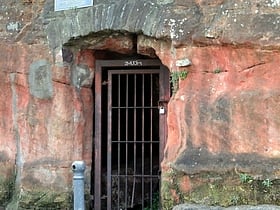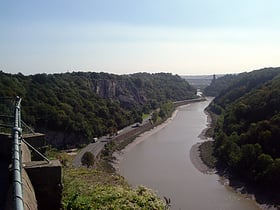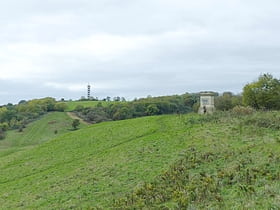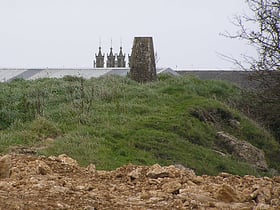Bristol: Nature
Places and attractions in the Nature category
Categories
- Church
- Park
- Museum
- Nightlife
- Georgian architecture
- Gothic Revival architecture
- Shopping
- Historical place
- History museum
- Street
- Vernacular architecture
- Concerts and shows
- Tower
- Memorial
- Bridge
- Neighbourhood
- Thomas Paty
- Harbor
- Shopping district
- Gothic architecture
- Area
- Art museum
- Shopping centre
- Theater
- Sacred and religious sites
- Specialty museum
- Music venue
- Art gallery
- Farm
- Ship
- Natural attraction
- Nature
- Archaeological site
- Sport
- Sport venue
- Canal
- Village
- Cinema
- Music and shows
Redcliffe Caves
Beneath the bustling streets of Bristol, United Kingdom, lies a hidden network of man-made tunnels known as the Redcliffe Caves. This subterranean labyrinth, carved out of the red sandstone cliffs, offers a unique glimpse into the city's past.
Avon Gorge
Nestled within the bustling city of Bristol, United Kingdom, the Avon Gorge stands as a magnificent natural wonder that captivates both locals and tourists alike. This dramatic canyon, carved out by the River Avon, presents a striking contrast to the urban landscape...
Purdown
Purdown is a hill in the north east of Bristol, England. The suburb of Lockleaze lies on its western flanks, and the Stoke Park estate occupies its eastern flanks. The M32 motorway crosses the eastern side of the hill.
Dundry Hill
Dundry Hill is immediately south of Bristol, England: it includes farmland, a small number of houses and a church. It stretches east–west for some two miles. Most of the hill is within the district of North Somerset.
Cleeve Wood
Cleeve Wood, Hanham is a is an 8.9 hectare biological Site of Special Scientific Interest in South Gloucestershire, notified in 1966. Cleeve Wood is situated on the steep south facing slopes of the River Avon valley near to the City of Bristol.
Pen Park Hole
Pen Park Hole is a large cavern situated underground, at the edge of Filton Golf Course. The cavern was discovered accidentally in the 17th Century and the first descent was made by Captain Sturmy in 1669.
Map






